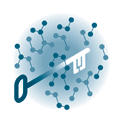Streamlining breakthroughs
Robert Nadon, Principal Investigator, Genome Groups, McGill University and Genome Quebec Innovation Centre, is a method man. While most of us focus on the discovery itself in scientific breakthroughs, Nadon ponders the process researchers use to get there and how it might be more efficient.

Tzigane
Lately, Nadon has set his gaze on the costly and mysterious system by which new drugs are tested. In this month's issue of Nature Biotechnology, he makes the case that early drug testing - when promising compounds are tested and either discarded or moved up to the next rung of scrutiny - relies too much on hunches, lacks the accuracy of later drug trial phases and could be improved with the help of statistics.
In the first stage of drug testing, plates holding dozens of compounds or more are tested for their potential to inhibit or stimulate specific chemical reactions. Nadon and his McGill co-authors, Nathalie Malo, James A. Hanley, Sonia Cerquozzi and Jerry Pelletier use modern statistical methods to provide a level of information about variability that has been previously unavailable until later phases of drug testing.
Nadon was first exposed to the flaws in the drug testing system when he started collaborating with biochemists at the McGill University and Genome Quebec Innovation Centre, having made the switch from experimental psychology, where his work with experimental platforms gave him an appreciation for the value of repetition.
As he watched drug testers rejecting compound after compound, he recalled, "Alarm bells went off. I thought, 'This is just wrong'."
Nadon said repeated early drug testing has long been avoided because obtaining even one replicate for each compound is prohibitively expensive. In their study, the McGill team describes how results can be obtained by repeating only some of the plates and using statistical models to extrapolate accurately. This method could both minimize testing costs and allow for more informed decisions about which compounds to pursue and which to discard.
Nadon anticipates a warm welcome for the method from pharmaceutical companies, which have tended to focus their cost-cutting measures on business-model efficiencies rather than streamlined testing methods. "Industry observers have expressed concern about inefficiencies in the drug discovery process," he said. "Although these are early days, statistical methods offer the potential to reduce costs by improving the odds that false hits will be abandoned early and true hits will be followed up."

